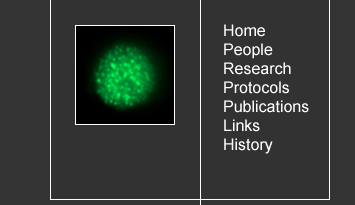
Role of EMF1 in the repression of flowering during vegetative development
(By Myriam Calonje, 5/8/2006)
Understanding the mechanism by which the EMF proteins repress flower homeotic genes during vegetative development requires the elucidation of the EMF1 role in the mechanism. EMF2 protein together with CLF, FIE and MSI1 are the core components of one of the PcG protein complexes found in plants. This complex is supposed to methylate histone 3 tails at lysine 27 (H3-K27) at specific regions of the target genes (Lindroth et al., 2004; Schubert and Goodrich: Abstract T09-029 at 15th International Conference on Arabidopsis Research 2004), but nothing is known about how the complex is recruited to the target genes or how the methylation mark mediates the repression. In Drosophila the mechanism by which the PcG proteins repress the homeotic genes implicate the binding of the DNA binding recruiters, such as Pho and Phol, to DNA regulatory elements in the target genes named Polycomb Response Elements (PRE). These DNA biding recruiters interact with PRC2 recruiting the complex to these sites (Fritsch et al., 1999; Brown et al., 2003; Wang et al., 2004). The PRC2 methylates H3-K27, creating an epigenetic mark that leads to the recruitment of PRC1 by the affinity of Pc (a core component of PRC1) chromodomain for this methyl mark (Fischle et al., 2003; Wang et al., 2004; Zhang et al., 2004). PRC1 in turn makes effective the repression by DNA compaction and inhibition of the transcription machinery (King et al., 2002; Francis et al., 2004; Dellino et al., 2004).
However, DNA binding recruiters or PRC1 proteins homologs has not been found in plants. Our aim is to determine the role of EMF1 protein in the silencing mechanism. Recent results show that EMF1, being a plant specific protein, display in vitro activities comparable to PRC1 proteins. Most probably this mechanism in vivo requires additional proteins but we have found that EMF1 has in vitro substantial activity as a single protein, suggesting that EMF1 may be central to the mechanism of transcriptional repression by PcG complexes. We have also found several putative EMF1-interacting proteins by yeast-2-hybrid assays and now we are studying the cellular localization for some of these interacting proteins and trying to confirm the interaction with EMF1 by in vivo interaction assays in N. benthamiana leaves.
